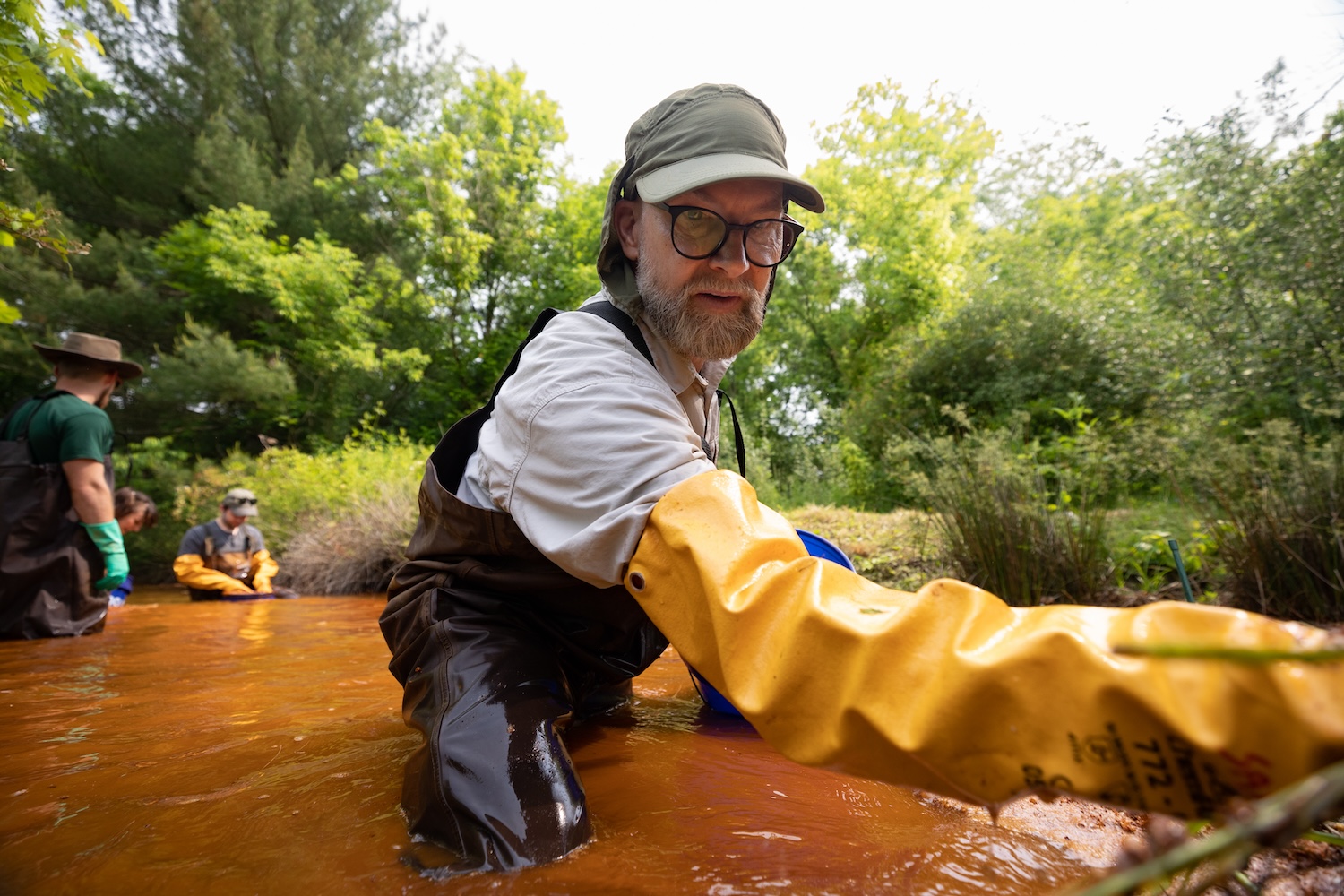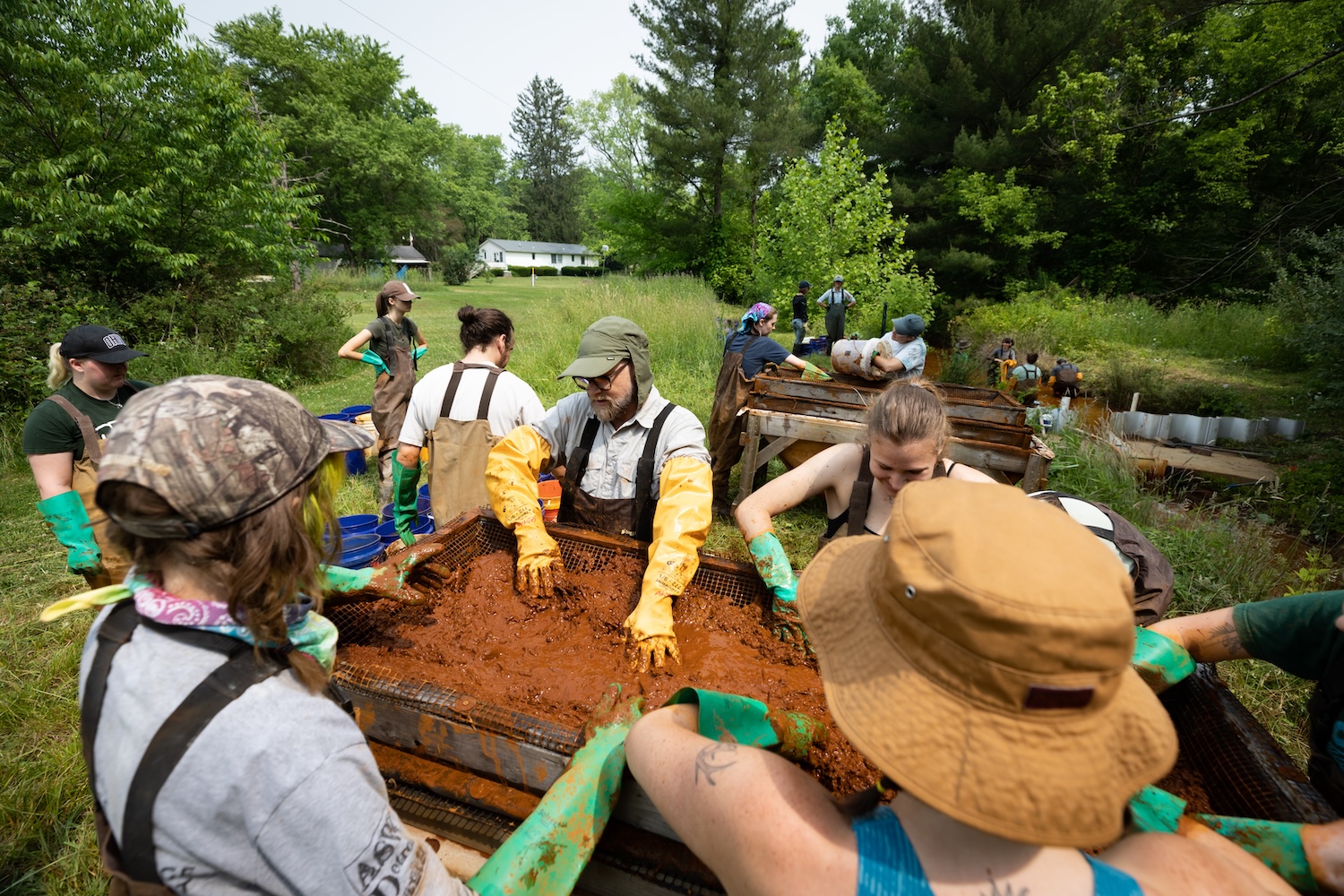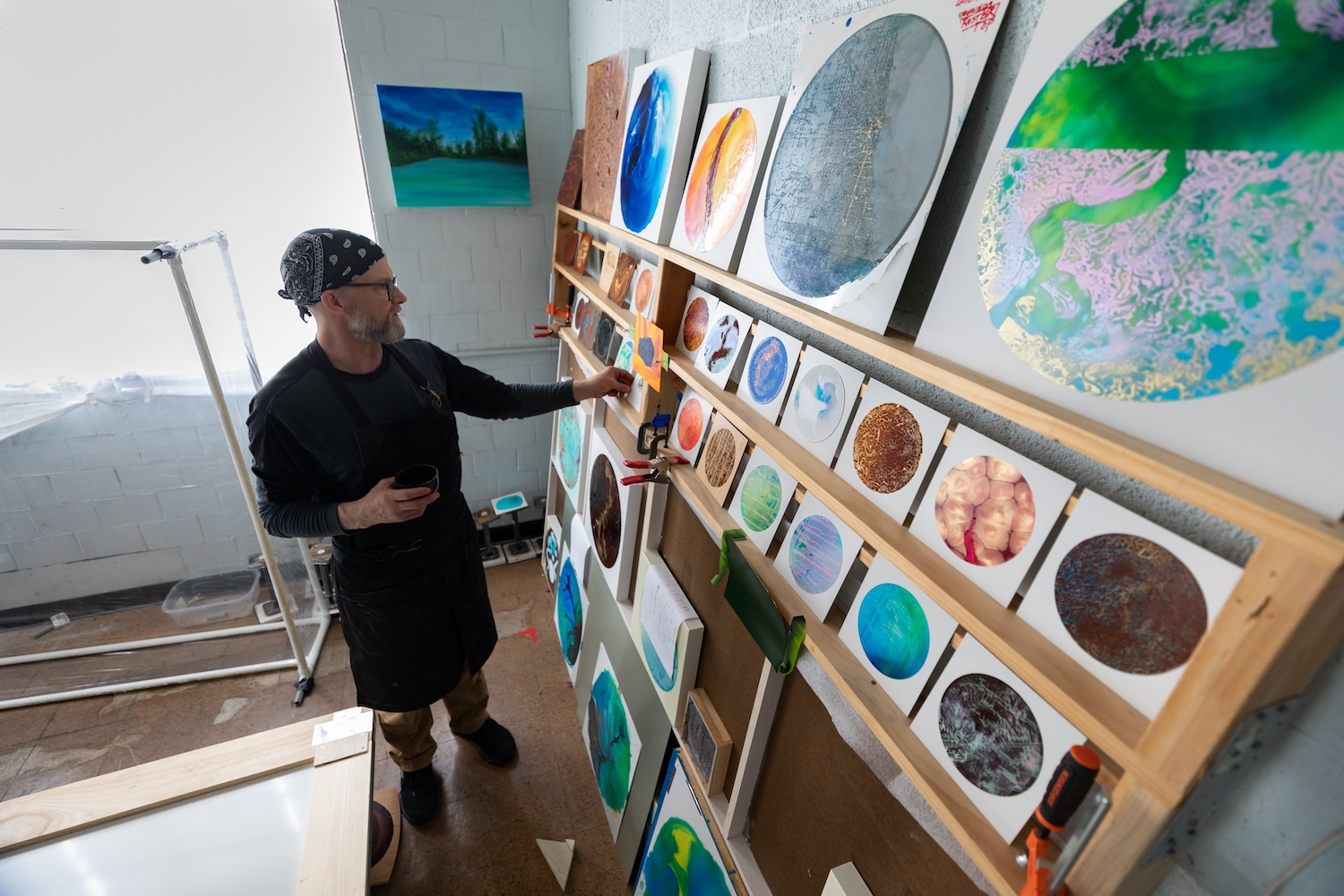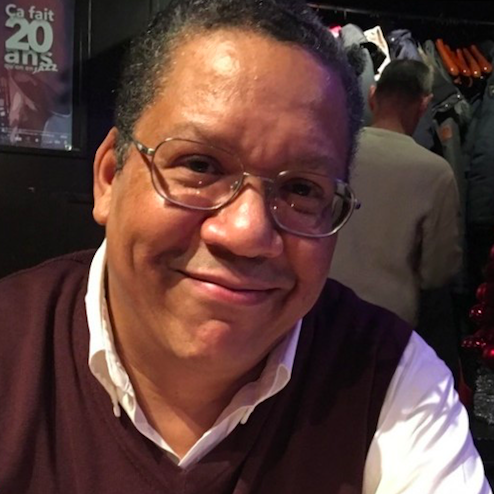
Art professor John Sabraw of Ohio University paints with pigment made from pollution in Sunday Creek.
In Ohio, over 1,000 miles of rivers, streams, and underground waterways are polluted by millions of gallons of acidic water carrying heavy metals it picked up in abandoned coal mines. The toxic discharge, called acid mine drainage, is so ingrained into the life of the region that schoolchildren often reach for an orange crayon to draw a picture of a river.
Acid mine drainage is created when a chemical reaction sparked by water and rocks that contain sulfur makes sulfuric acid. That acidic water can leech heavy metals from surrounding rock, particularly when it runs through old coal mines, resulting in a highly toxic substance that flows into streams and rivers, turning them yellow, orange, brown and red as the metals oxidize.
The largest occurrence of this in Ohio is the Truetown Drainage, which dumps over 2 million pounds of iron oxide into nearby Sunday Creek each year, destroying seven miles of aquatic habitat.
“It is like junking a couple of cars in the stream every single day,” said John Sabraw, an environmental activist and professor of art at Ohio University, who is using paint to help combat the problem.
When Sabraw first moved to southeastern Ohio, he was struck by the sight of the multicolored streams devoid of aquatic life. He knew iron oxide could be ground into a fine powder to make pigment, which is used to color paint, so he wanted to use the supply in the river to make his own.

Turns out, another professor at the university — Guy Riefler from the civil engineering department — was trying to do the same thing. Now, they are both part of a team capturing the acid mine drainage, converting the extracted minerals into pigments for paint, and using the proceeds from pigment sales to fund watershed restoration projects and maintenance through a new social enterprise called True Pigments.
The team organized volunteers for a pilot effort to extract iron oxide from a section of Sunday Creek near the Truetown Discharge. They donned waders, scooped sludge from the creek bottom, tested the quality of pigment made with the minerals, and conducted experiments to refine the product.
Meanwhile, teams of art and engineering students from Ohio University worked on important aspects of what will soon be a pigment production plant, including pricing and sourcing materials, and how to build it, Sabraw said. These efforts are the focus of a short film, “Toxic Art,” produced by the environmental advocacy platform Rivers Are Life.
The team is building a new facility, called the True Pigment Acid Mine Drainage Treatment and Pigment Production Facility, at the abandoned mine site to capture and treat the acidic runoff before it reaches Sunday Creek. The iron oxide will be separated and processed there to create pigment products.
The pigment can be sold to offset operational costs, produce a small profit, and create jobs while stopping a perpetual source of pollution and restoring the creek for aquatic life, Sabraw said.

This same extraction process won’t work everywhere, but in some cases, it can be adapted based on the local chemistry of a particular site, Sabraw said.
“Each location affected by pollution in their waterways will have to analyze their chemistry and then adapt our process to effectively treat it,” Sabraw said. “Wherever a water pollutant contains components that might be able to be turned into a viable product in a particular market, our process may prove useful.”
Ohio University, the nonprofit Rural Action, the Ohio Department of Natural Resources, and the U.S. Office of Surface Mining Reclamation and Enforcement are also a part of the project.
“The university and the state and federal agencies bring expertise and a lot of resources, but it’s much easier for us to do things like purchase the Truetown property and establish a business to sell pigment,” said Michelle Shively MacIver, director of project development for True Pigments. “Through our collaboration, we’ve been able to secure funding from local foundations and our state and federal partners. Rural Action does a lot of the community outreach and education surrounding our work, which is more in our wheelhouse than our partners'."

The new production facility is expected to be in full operation in 2025, and that seven-mile stretch of Sunday Creek will begin to recover as a result, MacIver said.
“This is the big ‘why’ of this project,” MacIver said. “None of us set out trying to make paint — well, maybe John did. We’re just trying to clean up this stream that flows through our home place and bring it back to life.”
Images courtesy of Ohio University

Gary E. Frank is a writer with more than 30 years of experience encompassing journalism, marketing, media relations, speech writing, university communications and corporate communications.














